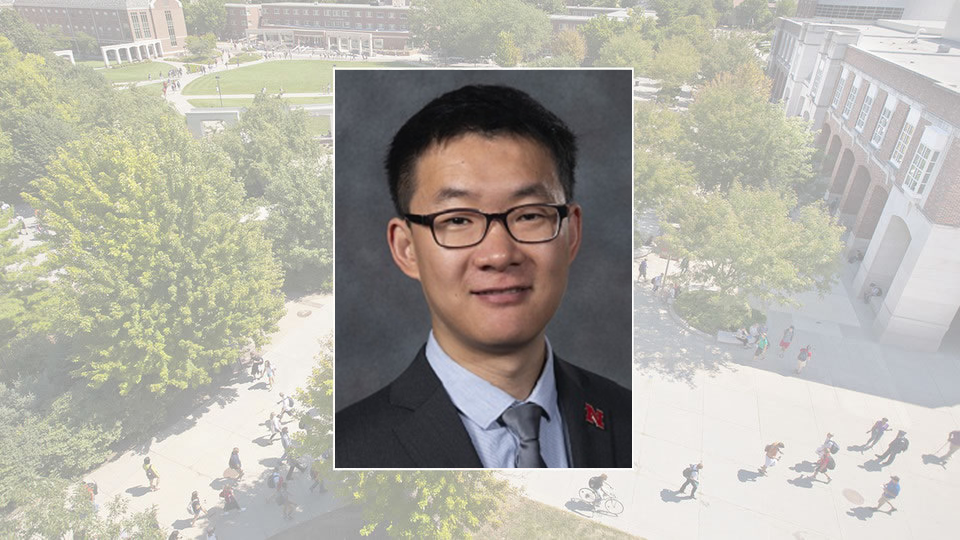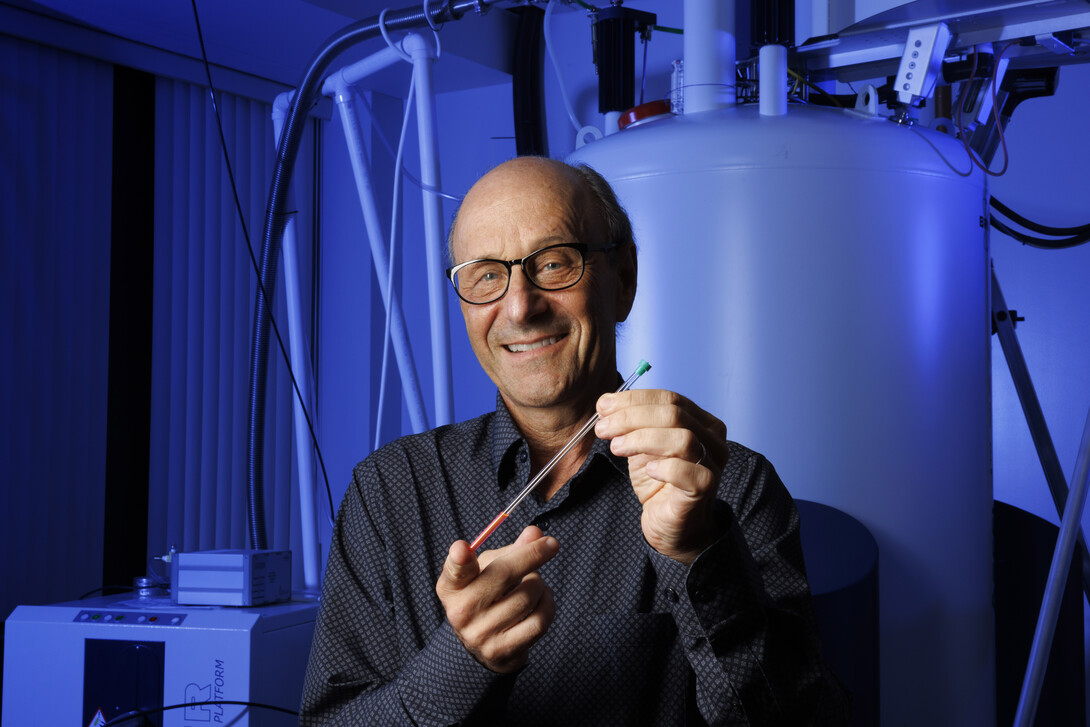
Yinsheng Guo, assistant professor in the Department of Chemistry, earned an Energy Research Grant from the Nebraska Center for Energy Sciences Research.
Guo is co-Principal Investigator on "Charge Carrier-Lattice Interactions in Halide Perovskite Soft Semiconductor Devices" with Congrui Grace Gin of the Department of Civil and Environmental Engineering in the College of Engineering.
Guo's research focuses on understanding how exceptional optoelectronic properties arise from unique structural dynamics in emerging materials. The NCESR is a collaboration between the Nebraska Public Power District (NPPD) and the university established to conduct research on renewable energy sources, energy efficiency and energy conservation; and to expand economic opportunities and improve quality of life for Nebraska and the nation.
Abstract
Metal halide perovskites (MHPs) have emerged as a new class of low-cost, high-efficiency semiconducting materials for solar energy and solid-state lighting. Extensive development is ongoing to push the new materials towards viable technology and commercial applications. In
contrast, a comprehensive and consistent understanding of the origin of the many outstanding optoelectronic properties is still lacking despite being intensively pursued.
The proposed research focuses on the strongly anharmonic lattice fluctuations and their optoelectronic implications in MHPs. This proposal views MHPs as a first example of soft semiconductors operational with strong lattice anharmonicity well beyond the perturbative regime. Unique materials properties arise in the strong anharmonicity regime, enable the high efficiency energy conversion in MHPs, and allow novel device innovations. These properties include dynamic localization of electronic states that endows defect tolerance; dielectric solvation and screening that reduce exciton binding energy and stabilize carriers; local symmetry breaking that underpins multiferroicity and spin dynamics; phonon decay cascades and energy dissipation pathways; and the self-healing mechanisms and defect photochemistry in a soft lattice. The proposed program aims to investigate fundamental materials properties in operational devices and link gained knowledge to device performance.
New insights are uncovered by employing and developing novel forms of optical spectroscopies and microscopies. These include far-field optical spectroscopy and imaging techniques to measure and manipulate structural and charge dynamics in materials, near-field nano-optical methods to reveal local structural modulation and correlated optoelectronic consequences, as well as combining measurements and modelling in a multiscale framework. Emphasis will be placed on distilling design principles from MHPs and generalization to other emerging materials. This proposal features tightly coupled research programs between technical advancements and scientific breakthroughs.



